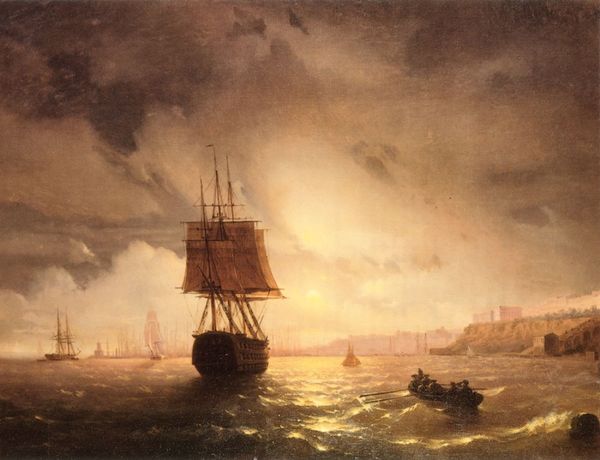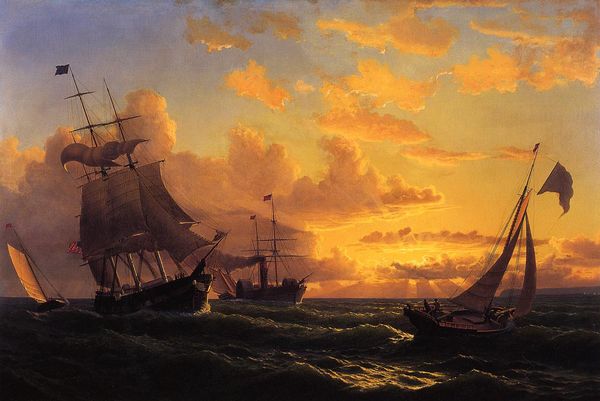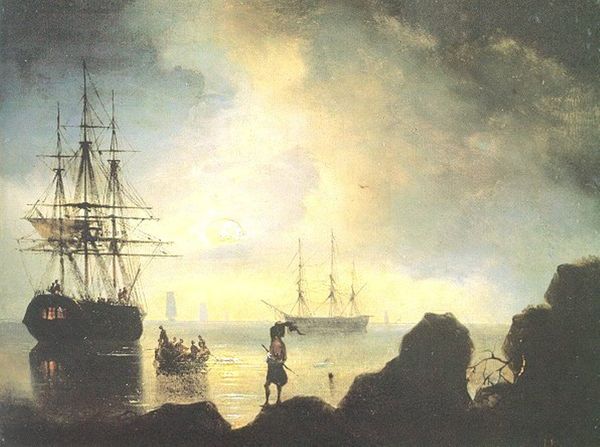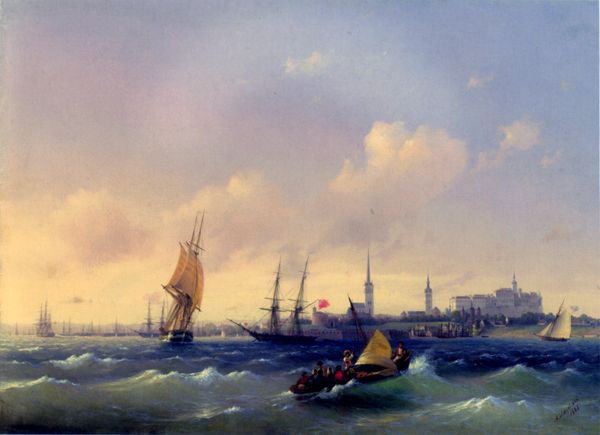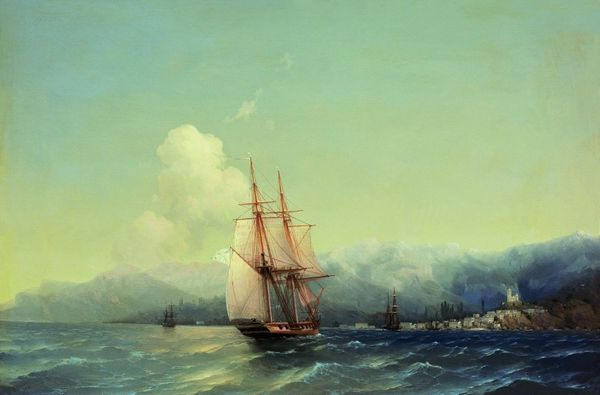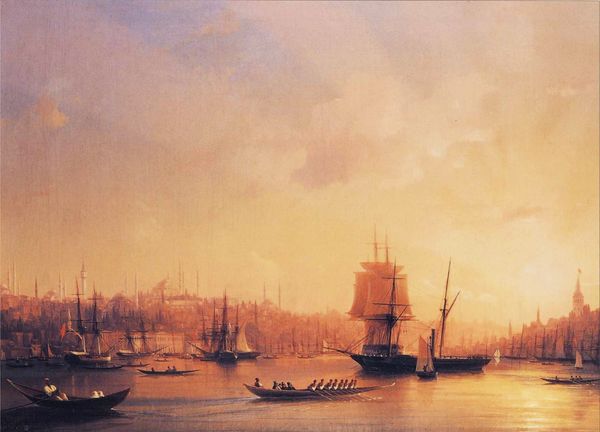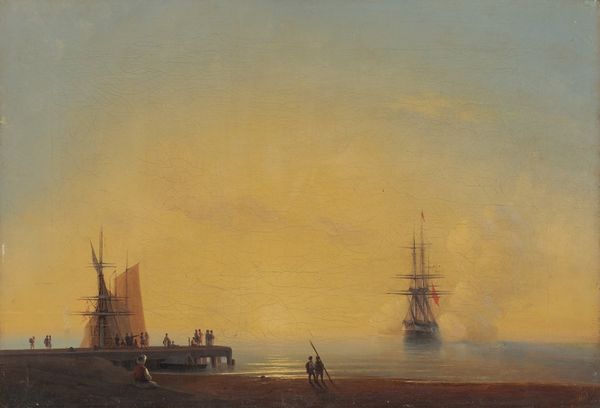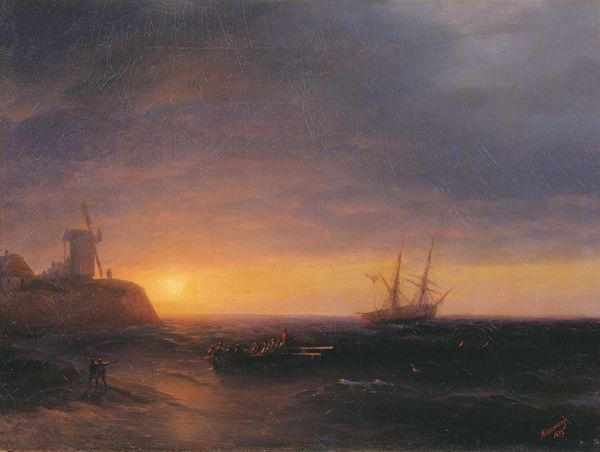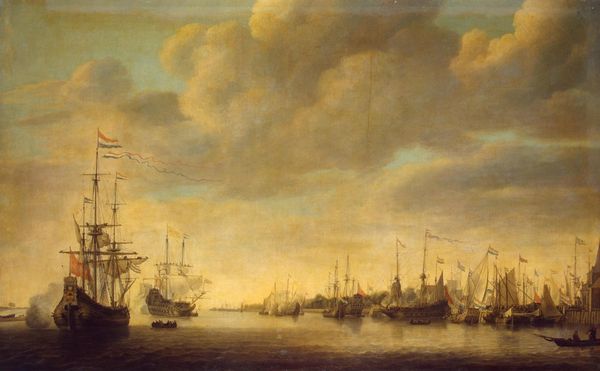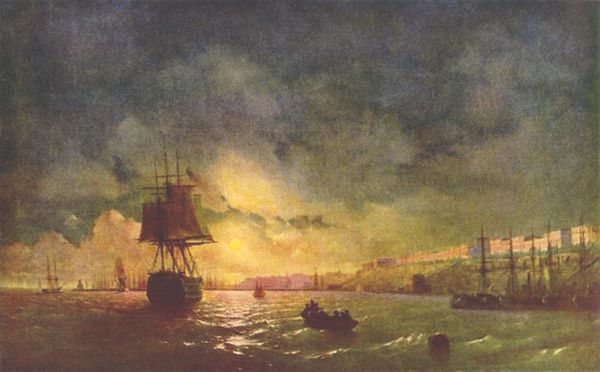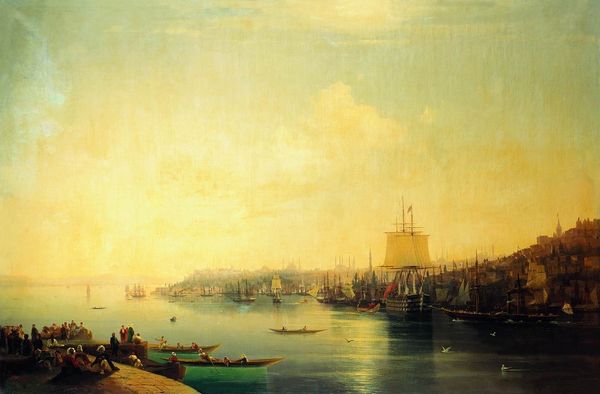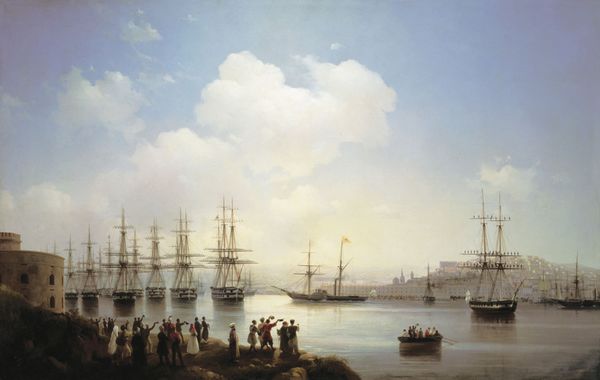
painting, oil-paint
#
boat
#
sky
#
ship
#
painting
#
oil-paint
#
landscape
#
ocean
#
romanticism
#
cloud
#
cityscape
Dimensions: 120 x 185 cm
Copyright: Public domain
Curator: Aivazovsky's "Kronstadt Fort 'The Emperor Alexander'," created in 1844, depicts a vista dominated by serene yellows, creams, and light blues. What stands out to you immediately? Editor: The mood. It's striking how this seascape evokes such a pervasive sense of stillness and anticipation simultaneously. Look how the soft light almost obscures what I assume is supposed to be a defensive stronghold—it feels more like a dreamscape than a military landscape. Curator: Note how Aivazovsky crafts atmosphere and the sensation of movement utilizing oil paint. Observe how he arranges forms: the hulking fort to the left, contrasted by the ships to the right and horizon line creates an equilibrium, no? Editor: Balanced, yes, but perhaps deliberately so. It appears he is placating the powerful while, possibly inadvertently, hinting at its latent obsolescence. The golden light feels prophetic almost—like an empire basking in its final moments of glory as merchant vessels move across what are to become global trade lanes. Curator: Your reading underscores how paintings of this era straddle the celebration of state power and a romantic fascination with nature. What do you read from his treatment of the ships themselves? Editor: The vessels mirror social hierarchies. Grand ships claim prominence, their sails unfurled. Smaller vessels are sprinkled around the periphery. I wonder, too, if Aivazovsky intends these vessels as markers of connection to external territories or instead as reflections of Russia’s ambition for territorial reach during the height of empire? Curator: Those tensions make it a work which continues to compel, doesn’t it? The painting’s formalism belies the symbolic weight you've uncovered. Editor: Indeed. It underscores the crucial dialogues that arise between the intrinsic artistic features and the broader sociopolitical environment, and Aivazovsky seems perfectly suited to reflect an ongoing state.
Comments
No comments
Be the first to comment and join the conversation on the ultimate creative platform.
